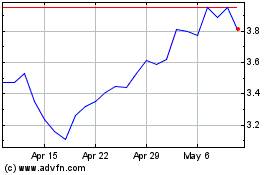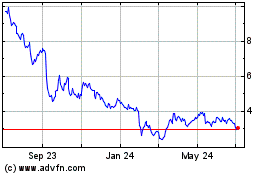CMAI Releases its 2012 World Polyolefins Analysis
October 17 2011 - 10:15AM
Business Wire
Chemical Market Associates, Inc. (CMAI), acquired by IHS Inc.
(NYSE: IHS - www.ihs.com), has released its new, 2012 World
Polyolefins Analysis, an annual global market study that covers
historical developments and future projections for supply, demand,
capacity, and trade in the global, high-density polyethylene,
low-density polyethylene, linear, low-density polyethylene and
polypropylene markets for the period 2006 to 2016. Polyolefins
represent almost two-thirds of the major commodity thermoplastics
used worldwide, and have numerous applications ranging from
automotive parts to carpet fibers, household and food containers,
toys, stretch film/shrink film, diapers and trash bags. The global
polyolefin market is changing dramatically in response to the
quickly advancing industrialization process in emerging markets, as
well as improvements in global communications and trade
liberalization.
According to the CMAI analysis, increases in consumption will
continue to be driven by novel applications where plastics can
deliver cost advantages, performance enhancements, or both.
Investments in polyolefin production capacity are increasingly
concentrated in regions with affordable supplies of feedstocks or
high-demand growth areas, such as the Middle East and the Asia
Pacific region.
The same trend, particularly in Western Europe, is driving
industry consolidation, operations optimization, and a shift toward
the production of higher-value, higher-performance products. In
North America, low-cost feedstock from shale gas is revitalizing
the polyethylene (PE) business, making PE exports highly
competitive globally. In response, several producers have announced
new capital projects that are currently scheduled to come on-stream
in the second half of the decade.
One of the most challenging issues facing the polyolefin
industry during the last decade has been the loss of its pricing
power. Wedged between the demands of upstream oil and gas
corporations and major retail chains like Walmart on the downstream
side, the polyolefin production chain has been caught in the
middle. While energy and raw material prices increased in response
to tighter global market conditions, prices for finished goods
remained at the same level or even declined, as imports from low
labor cost countries flooded the market. As a result, profits in
the polyolefin industry had all but disappeared.
Although the recession of 2008-2009 only exacerbated the already
unfavorable market conditions for polyolefins, producers of the
product are making strategic moves to protect against further
margin erosion. Instead of engaging in competition for market
shares, producers have been controlling production and inventories
to keep the market balance tight.
The development of “green” sources for the production of
plastics is advancing steadily and is generating the first tangible
results. In September 2010, Braskem started operations at a
Brazilian facility that produces conventional polyethylene from
sugar cane. Brakem’s customers include major consumer-product
corporations that will be using the sugar-cane-based polyethylene
resins for packaging of cosmetics and container closures. A second
project for the production of bio-polymer, also in Brazil, was
recently announced jointly by Dow and Mitsui & Co.
To order the 2012 World Polyolefins Analysis and learn
more about the current market issues and CMAI’s outlook for this
industry, please visit www.cmaiglobal.com. The analysis is
available in paper and CD-ROM format, and offers access to CMAI’s
Online Capacity and Supply/Demand databases, which are updated
frequently to reflect changing market conditions.
CMAI is the premier provider of market, planning and business
advisory services for the global chemical, plastics, fibers and
chlor-alkali industries. With offices in Houston, New York, London,
Dubai, Düsseldorf, Bangkok, Singapore and Shanghai, CMAI has
provided expert business advisory services to a broad range of
companies across multiple value chains and geographies since 1979.
Clients to CMAI services include companies in the following
industries: chemical & oil, technology & EPC; banking and
financial institutions; plastic converters; textile & apparel
manufacturers; brand-owners; grocers/retailers, government
agencies; trading.
IHS (NYSE: IHS) is the leading source of information and insight
in critical areas that shape today’s business landscape, including
energy and power; design and supply chain; defense, risk and
security; environmental, health and safety (EHS) and
sustainability; country and industry forecasting; and commodities,
pricing and cost. Businesses and governments in more than 165
countries around the globe rely on the comprehensive content,
expert independent analysis and flexible delivery methods of IHS to
make high-impact decisions and develop strategies with speed and
confidence. IHS has been in business since 1959 and became a
publicly traded company on the New York Stock Exchange in 2005.
Headquartered in Englewood, Colorado, USA, IHS employs
approximately 5,100 people in more than 30 countries around the
world.
Jamie Van FleetCMAI1401 Enclave Parkway, Suite
500Houston, TX 77077 U.S.A.Tel: 1-281-531-4660Fax:
1-281-531-9966Email:
jvanfleet@cmaiglobal.comHEADQUARTERSHouston, TexasTel:
1-281-531-4660Cmai@cmaiglobal.comEUROPE LtdLondon,
EnglandTel: 44
(0)20-7930-9818London@cmaiglobal.comASIASingaporeTel:
65-6-226-5363Asia@cmaiglobal.comUSAValhalla, New YorkTel:
1-914-579-0010NewYork@cmaiglobal.comEUROPE GmbHDüsseldorf,
GermanyTel: 49-211-710081-10Dusseldorf@cmaiglobal.comMIDDLE
EASTDubai, U.A.ETel:
971-4-391-2931Dubai@cmaiglobal.comCHINAShanghai, PRCTel:
86-21-6163-5470Shanghai@cmaiglobal.comTHAILANDBangkokTel: 66
2 617 7820Thailand@cmaiglobal.com
IHS (NYSE:IHS)
Historical Stock Chart
From May 2024 to Jun 2024

IHS (NYSE:IHS)
Historical Stock Chart
From Jun 2023 to Jun 2024
